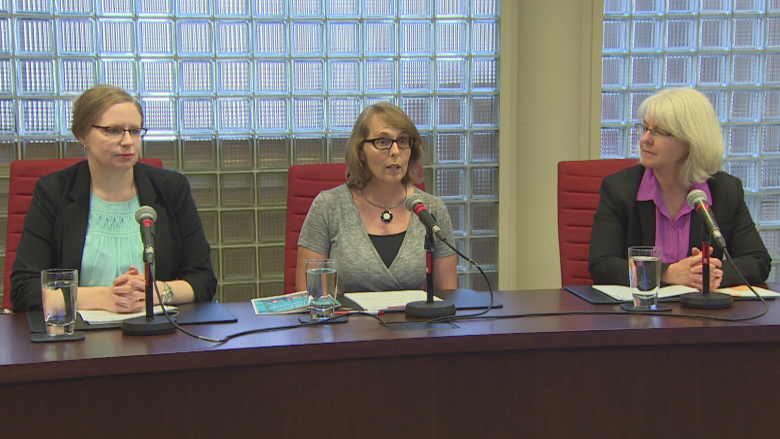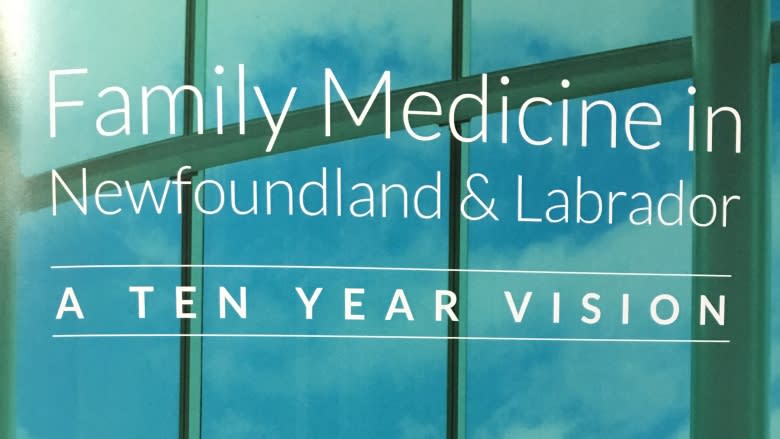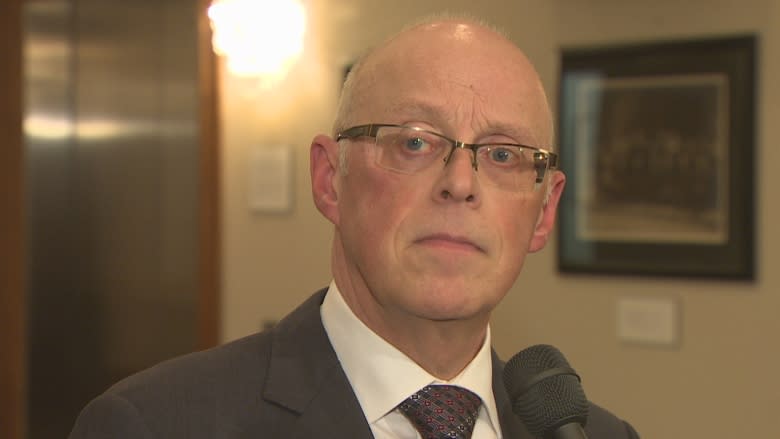Ending feud with government chief among goals in medical association's 10-year plan
Family doctors in the province are tired of being "disrespected" by the government and say the relationship needs to be repaired for everyone's benefit.
Three medical organizations in the province came together on Tuesday to present a 10-year plan for family medicine to the provincial government.
Newfoundland and Labrador is encroaching on a demographic crisis and has been hurtling blindly towards it, the groups said.
"Family medicine is at a crossroads," said Newfoundland and Labrador Medical Association president Dr. Lynn Dwyer.
"Right now, the health system has no plan and more and more family doctors are feeling a lack of respect and support from government."
The new 10-year plan was constructed by the NLMA, along with the Newfoundland and Labrador College of Family Physicians and Memorial University's family medicine program.
They hope to renew their relationships with government in hopes they can influence decisions made for family medicine moving foward, especially with the looming issues related to the boom in numbers of senior citizens.
Their plan is based on the province's population being one-third senior citizens by 2038 — double the current proportion.
Since the government cannot afford to increase spending on health care, the three organizations believe improving family medicine is the best way forward.
In their plan, family doctors would be more accessible — right now, about 50,000 Newfoundlanders and Labradorians are without one — and would have more control over a patient's care.
They would be at the centre of a patient's "medical home," being the liaison between a patient and other health care providers.
Katherine Stringer, chairperson of the family medicine program at MUN, said students are taught to work in primary care teams — that may consist of nurse practitioners, social workers, pharmacists and more — but then come to find those teams don't exist in the areas where they work.
New payment system?
They are also taught to provide a high level of care that often means spending more time with fewer patients, Stringer said, but when they enter a fee-for-service practice they realize it is not conducive to making money.
"As private professionals, FFS physicians receive [no benefits] ... and there is no pension waiting for them when they retire," the document reads.
For these reasons and many more, Stringer said medical students are opting to study something other than family medicine and in places other than Newfoundland and Labrador.
One of the solutions proposed in the plan would see a new payment model for doctors who want an alternative to the fee-for-service system — for those who want to spend more time with patients and organize a team approach.
Similar models have been adopted in Ontario, Alberta, B.C. and New Brunswick.
The plan also calls for better access to technology such as electronic record-keeping and a better distribution of health care resources throughout the province.
The plan calls for a physician retention study within one year, and a study to determine how many family doctors are needed within two years.
But it all rides on the organizations repairing their relationships with the government, Dwyer said.
Haggie says he's open to changing fee structure
That starts with Health Minister Dr. John Haggie, who is a surgeon by trade and a former president of the NLMA.
"We had hoped I guess that we would have a good working relationship with him but unfortunately that hasn't quite happened," Dwyer told reporters on Tuesday.
"There's been some comments made from the minister of health during the past that have offended our family physicians of the province and some physicians in general."
In an interview with CBC Radio's On the Go on Wednesday, Haggie said the NLMA's plan mirrors many of the discussions he's had in his department.
"In terms of how we would align primary care over the next five to 10 years, [their plan] matches very closely what we want to do and the money we've put into the business so far," he said.
Haggie also doesn't think changing the fee structure and keeping the team approach are mutually exclusive.
"There is no one ideal way to compensate physicians. I'm prepared to look at any new or innovative scheme that will get us better outcomes," he said.
"I'm not interested in funding anything other than the best of outcomes for the people of this province."
The health minister said the province is currently in negotiations with the NLMA over their next compensation package.
"What we need to do is find a way to describe the service — and we're all agreed that the team is the way to go — and then figure out what's a fair way of paying for that. Is it by time? Is it by volume? Is it by particular procedure? And that's the nub of the discussion."
By the numbers
The following are some of the most noteworthy statistics laid out in the 10-year plan:
- 14 per cent of family doctors in N.L. are 65 or older.
- 54 per cent of respondents in a provincial survey had two family doctors in the last two years, while 13 per cent had three different family doctors
- 14 per cent of doctors in the province have plans to leave within two years, as compared to the national average of 3.1 per cent
- 26 per cent of doctors in N.L. say they work collaboratively, far below the national average of 44 per cent




